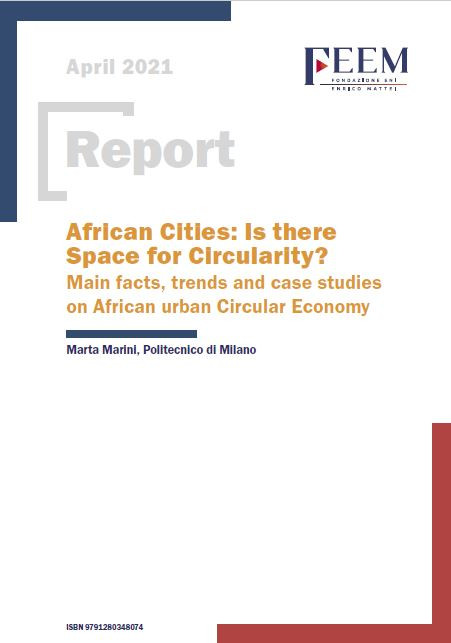African Cities: Is there Space for Circularity?
In this report several definitions of circular economy reported in the literature are introduced and discussed. From the first definitions where Planet Earth is described as a closed system with limited assimilative capacity, to the evolution of the concept focused on raw materials, resource flows and closed loops. A particular emphasis is then given to the application of circularity to the urban context, focusing on the African continent. The problem with the concept of urban circularity is that still remains on general assumptions due to a lack of examples about circular cities and an overall confusion in defining the indicators that make circular a city; the document proposes some frameworks to define it. The few cases known are mostly focused on high-income economies, indeed in Africa the difficulty of acquiring information on cases of circularity is challenging due to a lack of literature. Nonetheless, the absence of notions does not exclude the existence of relevant cases of circularity and sustainability. Indeed, making the shift towards circular behaviours might be more ‘intuitive’ in low and middle-income economies, requiring less behavioural changes compared to the richer counterparties. To conclude, this essay attempts to shorten the distance between the academic debate concerning circularity and the on-field initiatives, providing a method to classify the existing case studies in Sub- Saharan Africa.
In this report several definitions of circular economy reported in the literature are introduced and discussed. From the first definitions where Planet Earth is described as a closed system with limited assimilative capacity, to the evolution of the concept focused on raw materials, resource flows and closed loops. A particular emphasis is then given to the application of circularity to the urban context, focusing on the African continent. The problem with the concept of urban circularity is that still remains on general assumptions due to a lack of examples about circular cities and an overall confusion in defining the indicators that make circular a city; the document proposes some frameworks to define it. The few cases known are mostly focused on high-income economies, indeed in Africa the difficulty of acquiring information on cases of circularity is challenging due to a lack of literature. Nonetheless, the absence of notions does not exclude the existence of relevant cases of circularity and sustainability. Indeed, making the shift towards circular behaviours might be more ‘intuitive’ in low and middle-income economies, requiring less behavioural changes compared to the richer counterparties. To conclude, this essay attempts to shorten the distance between the academic debate concerning circularity and the on-field initiatives, providing a method to classify the existing case studies in Sub- Saharan Africa.

